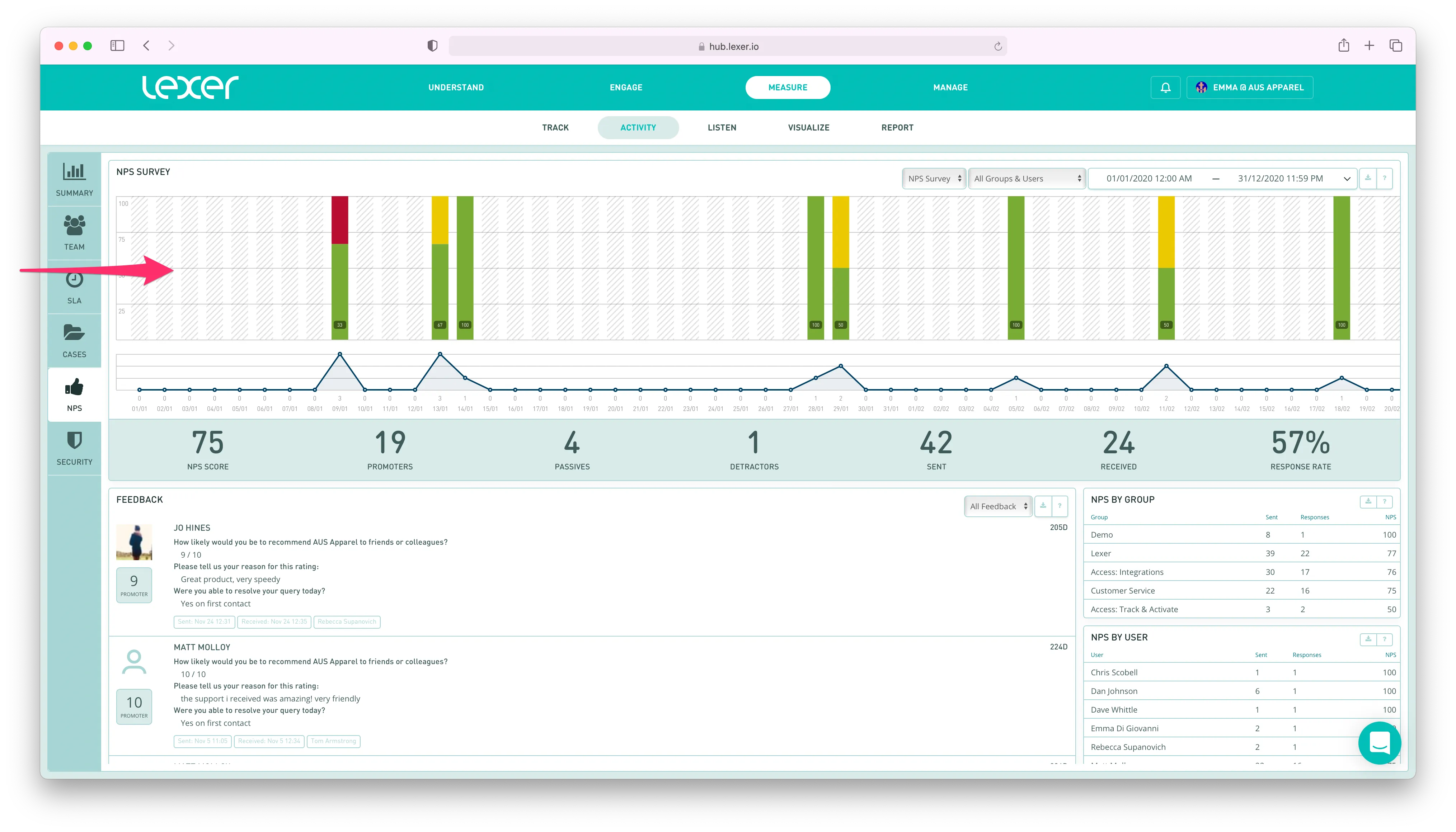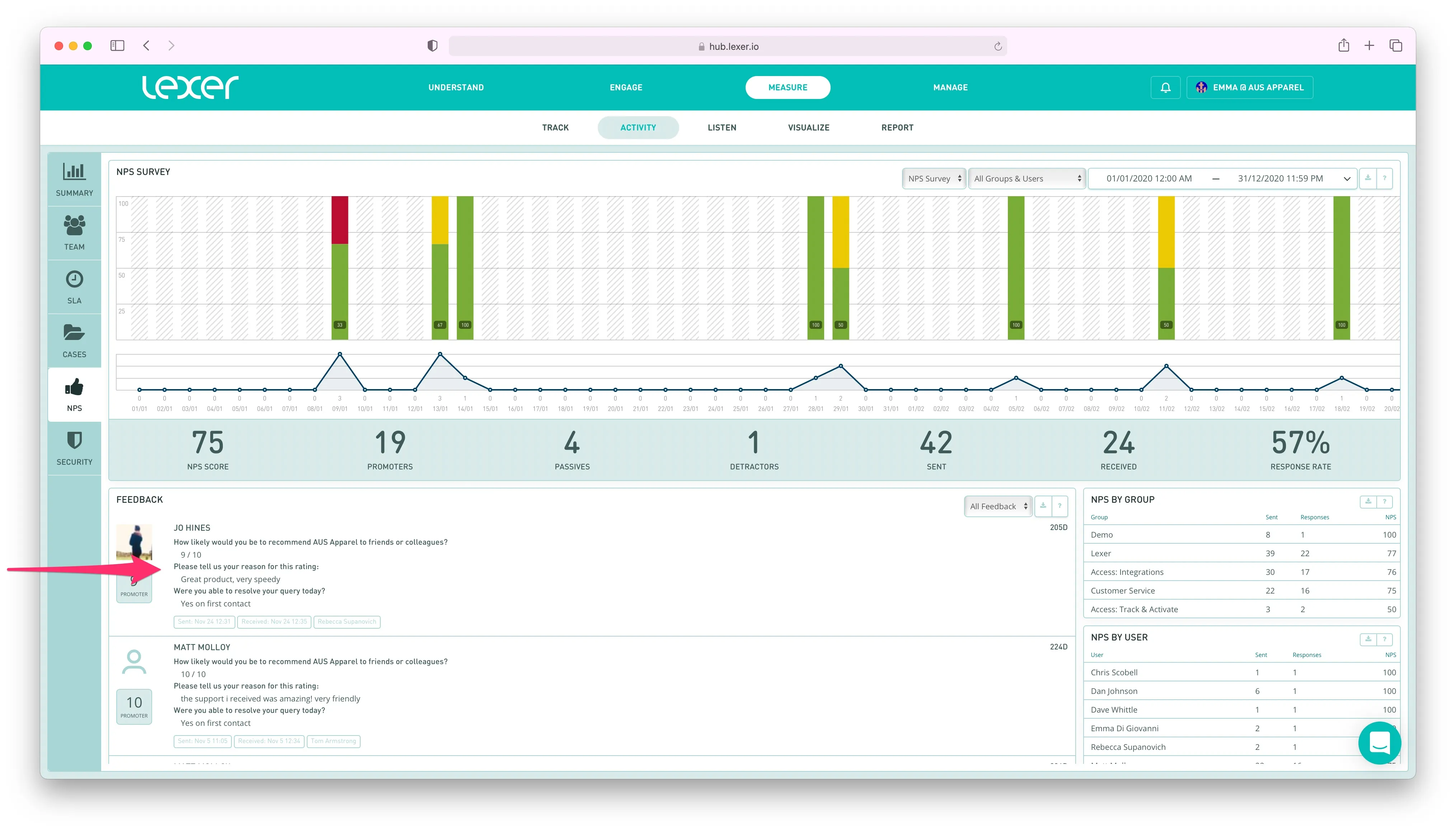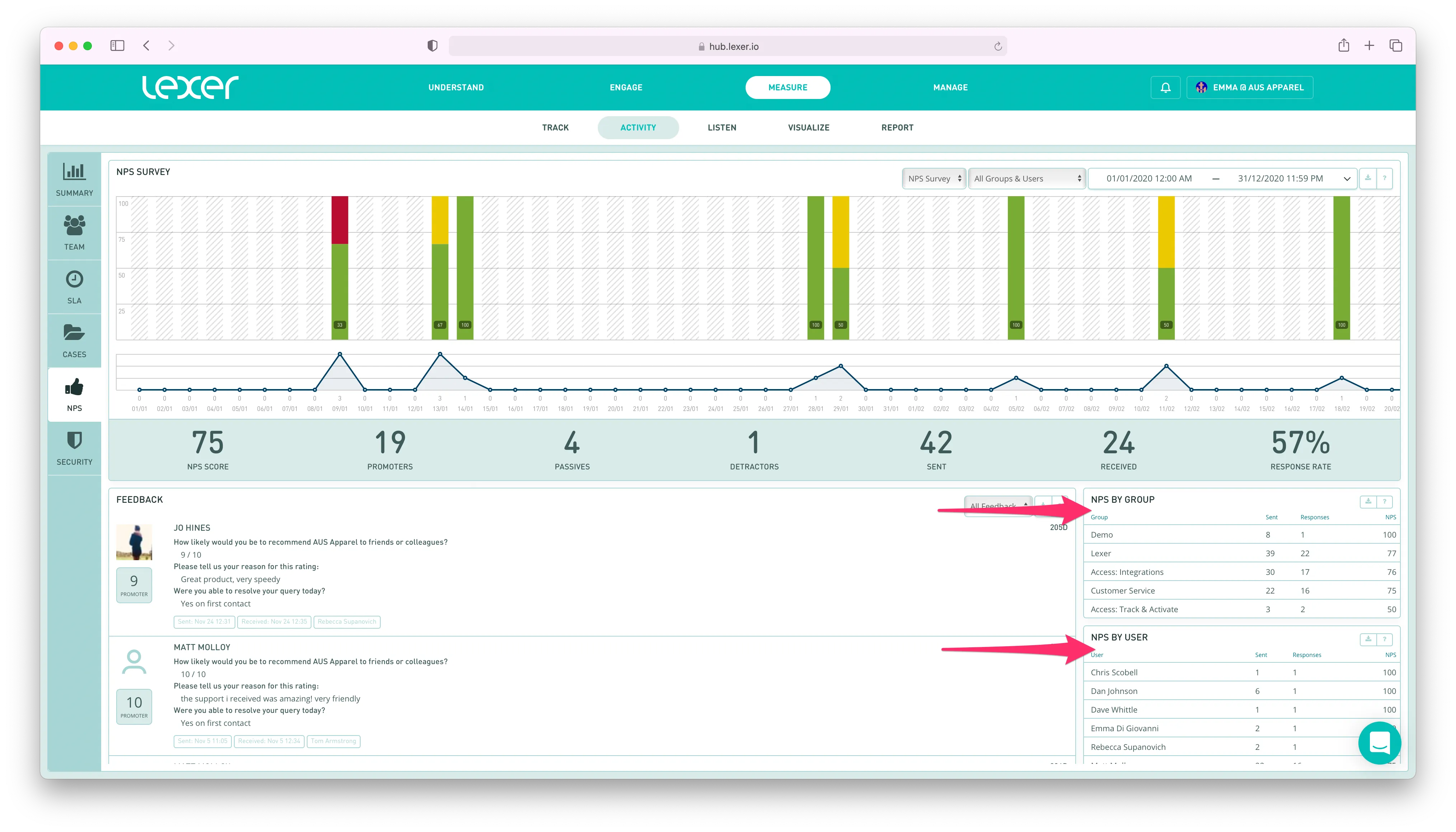NPS report
Net Promoter Score (NPS) is a customer fulfilled ranking system, where the customer will rank an engagement with one of your agents, and score the engagement out of 10. This ranking is designed to represent how the customer feels about the interaction, allowing you to identify whether or not a customer is a promoter (gave a positive score), or a detractor (gave a negative score), as well as determine the quality of service by your agents.
Collecting NPS scores allows managers to rank teams, agents, and individual interactions, and use that to set benchmarks and KPIs. The NPS Report provides you with all the details that you need to begin using NPS data for everyday reporting.
NPS calculation
Your NPS score is the percentage of detractors deducted from the percentage of promoters. Scores of 7s and 8s (Passives) are removed from the calculation, since they will neither promote nor detract. For example, if 50% of respondents were promoters and 10% were detractors, your NPS would be 40.
NPS report explained
Time series chart
This chart will provide you with a fast breakdown of NPS results received over your selected date range.

NPS score breakdown
Each column on the chart represents a single day in the given date range, and your NPS score for that day is displayed on the column.
Summary statistics
For the entire date range and teams selected, the summary shows:
Responses feed
Here you can view all all feedback submitted via your NPS survey. You can also choose to filter this table by promoters, passives, or detractors.

As with all other tables in Activity, this data can be exported for external analysis. It’s also fully interactive - you can click on entries to interact with them, the same way as you would in Engage, giving you extra context to that piece of feedback.
Team and agent scores

If the search you’re running contains a specific team of agents, or multiple teams, these charts will help you understand how each team or team member contributed to the results. This is best for comparing a team’s performance against one another, or understanding those same scores, but at an agent level.

